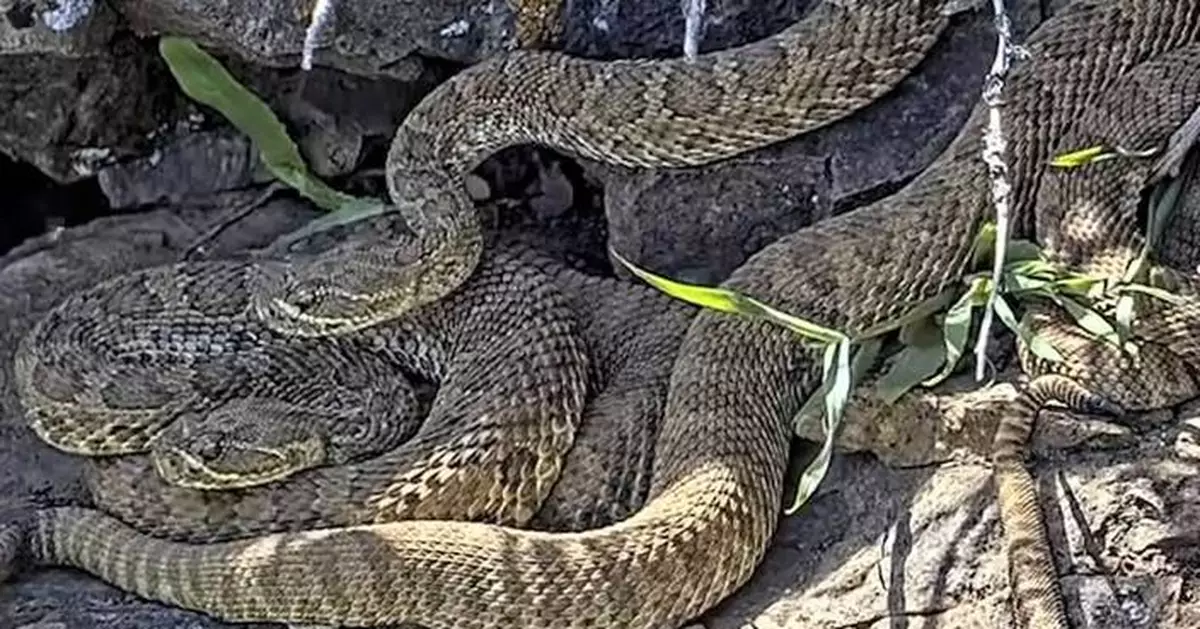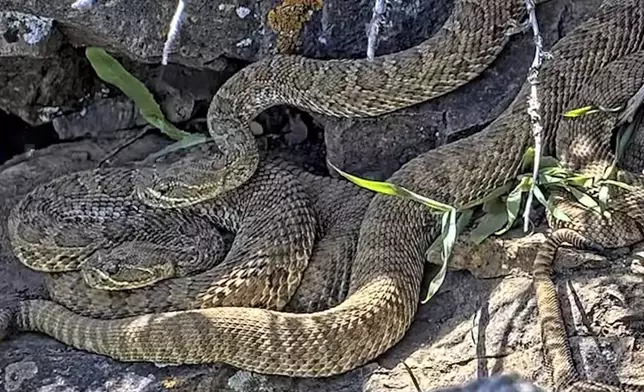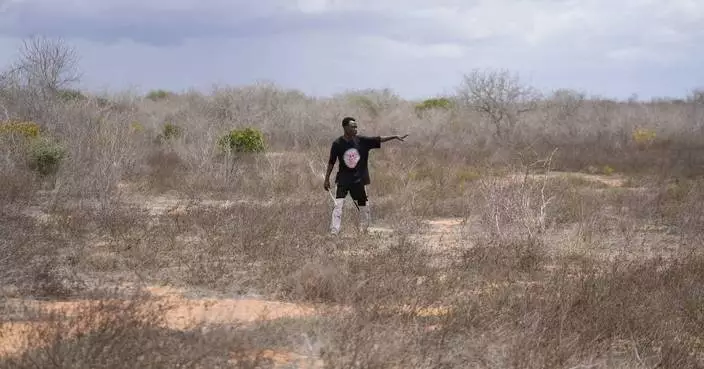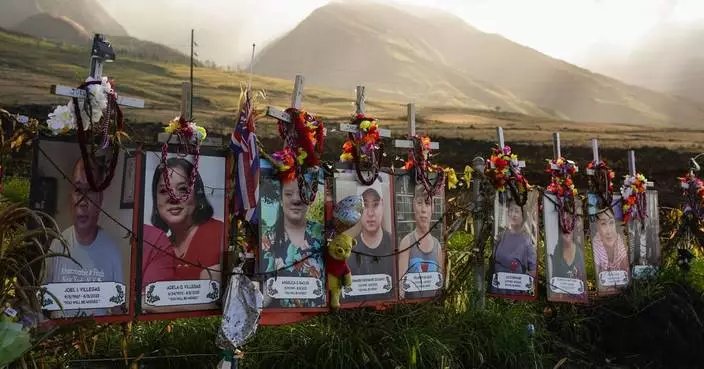CHEYENNE, Wyo. (AP) — A “mega den” of hundreds of rattlesnakes in Colorado is getting even bigger now that late summer is here and babies are being born.
Thanks to livestream video, scientists studying the den on a craggy hillside in Colorado are learning more about these enigmatic — and often misunderstood — reptiles. They're observing as the youngsters, called pups, slither over and between adult females on lichen-encrusted rocks.
Click to Gallery
CHEYENNE, Wyo. (AP) — A “mega den” of hundreds of rattlesnakes in Colorado is getting even bigger now that late summer is here and babies are being born.
In this image taken from a Project Rattlecam video, an adult rattlesnake checks on juveniles after a bird flew near them at a den under remote observation in Colorado on Aug. 23, 2024. (Project Rattlecam via AP)
In this image taken from a Project Rattlecam video, an adult rattlesnake rests with juveniles at a den under remote observation in Colorado on Aug. 22, 2024. (Project Rattlecam via AP)
In this image taken from a Project Rattlecam video, an adult rattlesnake rests with juveniles at a den under remote observation in Colorado on Wednesday, Aug. 28, 2024. (Project Rattlecam via AP)
FILE - This image provided by Emily Taylor shows the weather station and camera setup, which are part of the Cal Poly research and community service initiative, Project RattleCam, in northern Colorado, in May 2024. (Emily Taylor/Project RattleCam via AP, File)
FILE - This undated image made from a video provided by Project RattleCam shows a "mega den" of rattlesnakes in a remote location in northern Colorado. (Project RattleCam via AP, File)
The public can watch too on the Project RattleCam website and help with important work including how to tell the snakes apart. Since researchers put their remote camera online in May, several snakes have become known in a chatroom and to scientists by names including “Woodstock,” “Thea” and “Agent 008.”
The live feed, which draws as many as 500 people at a time online, on Thursday showed a tangle of baby snakes with tiny nubs for rattles. They have a lot of growing to do: A rattlesnake adds a rattle segment each time it sheds its skin a couple times a year, on average.
The project is a collaboration between California Polytechnic State University in San Luis Obispo, snake removal company Central Coast Snake Services and Dickinson College in Carlisle, Pennsylvania.
By involving the public, the scientists hope to dispel the idea that rattlesnakes are usually fierce and dangerous. In fact, experts say they rarely bite unless threatened or provoked and often are just the opposite.
Rattlesnakes are not only among the few reptiles that care for their young. They even care for the young of others. The adults protect and lend body heat to pups from birth until they enter hibernation in mid-autumn, said Max Roberts, a CalPoly graduate student researcher.
“We regularly see what we like to call ‘babysitting,’ pregnant females that we can visibly see have not given birth, yet are kind of guarding the newborn snakes,” Roberts said Wednesday.
As many as 2,000 rattlesnakes spend the winter at the location on private land, which the researchers are keeping secret to discourage trespassers. Once the weather warms, only pregnant females remain while the others disperse to nearby territory.
This year, the scientists keeping watch over the Colorado site have observed the rattlesnakes coil up and catch water to drink from the cups formed by their bodies. They’ve also seen how the snakes react to birds swooping in to try to grab a scaly meal.
The highlight of summer is in late August and early September when the rattlesnakes give birth over a roughly two-week period.
“As soon as they're born, they know how to move into the sun or into the shade to regulate their body temperature,” Roberts said.
There are 36 species of rattlesnakes, most of which inhabit the U.S. They range across nearly all states and are especially common in the Southwest. Those being studied now are prairie rattlesnakes, which can be found in much of the central and western U.S. and into Canada and Mexico.
Like other pit viper species but unlike most snakes, rattlesnakes don't lay eggs. Instead, they give birth to live young. Eight is an average-size brood, with the number depending on the snake's size, according to Roberts.
Roberts is studying how temperature changes and ultraviolet sunlight affect snake behavior. Another graduate student, Owen Bachhuber, is studying the family and social relationships between rattlesnakes.
The researchers watch the live feed all day.
“We are interested in studying the natural behavior of rattlesnakes, free from human disturbance. What do rattlesnakes actually do when we're not there?” Roberts said.
Now that the Rocky Mountain summer is cooling, some males have been returning. By November, the camera running on solar and battery power will be turned off until next spring, when the snakes will re-emerge from their “mega den.”
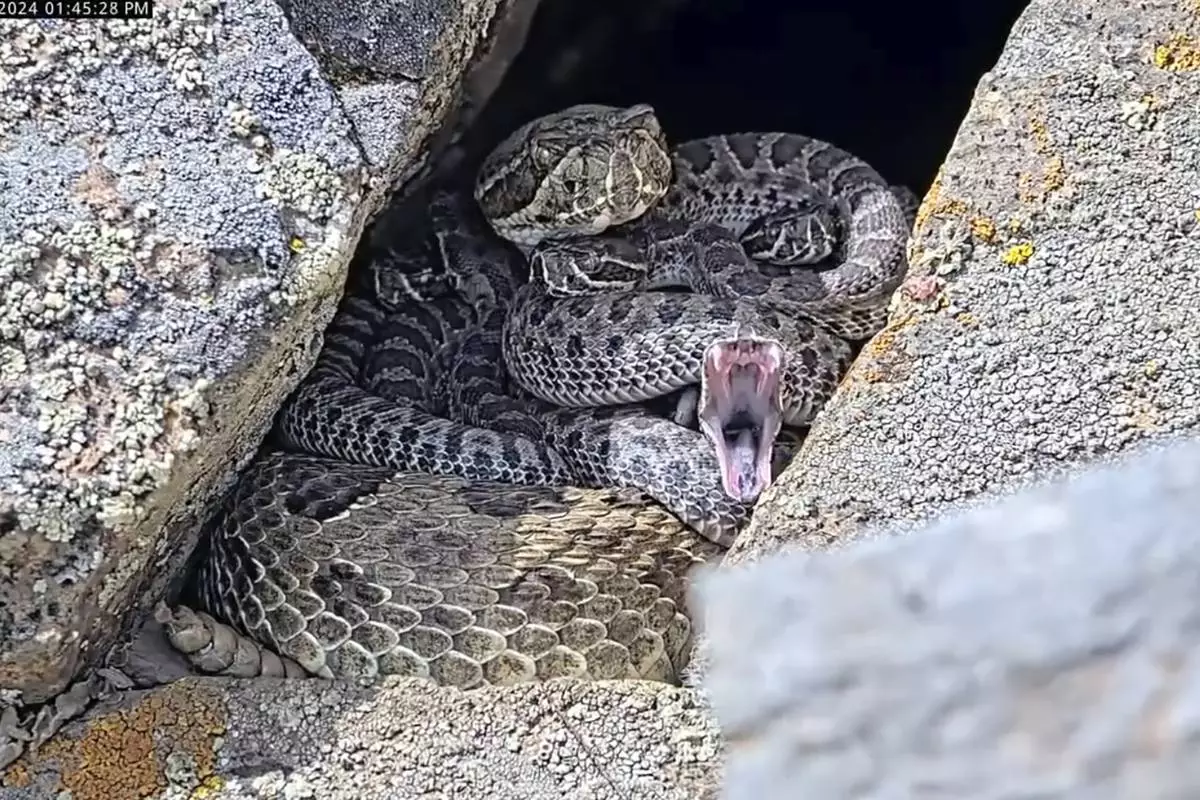
In this image taken from a Project Rattlecam video, an adult rattlesnake rests with juveniles at a den under remote observation in Colorado on Aug. 22, 2024. (Project Rattlecam via AP)
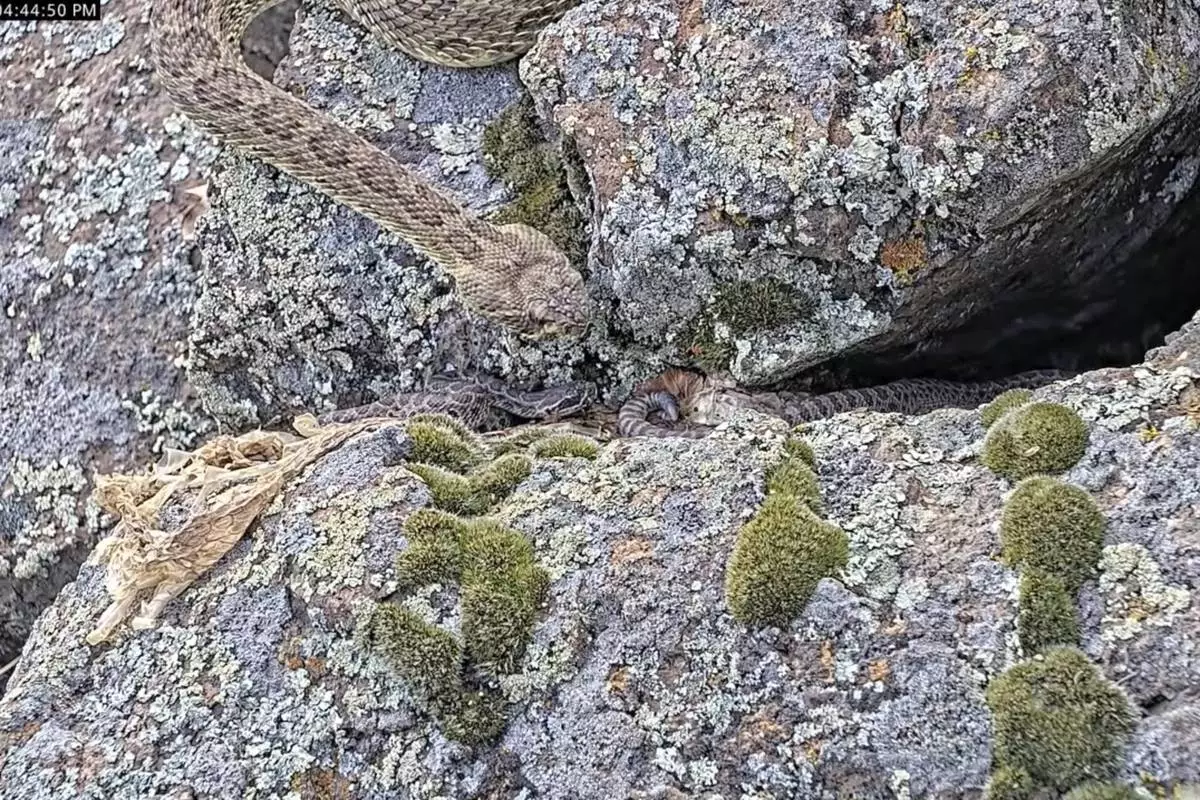
In this image taken from a Project Rattlecam video, an adult rattlesnake checks on juveniles after a bird flew near them at a den under remote observation in Colorado on Aug. 23, 2024. (Project Rattlecam via AP)
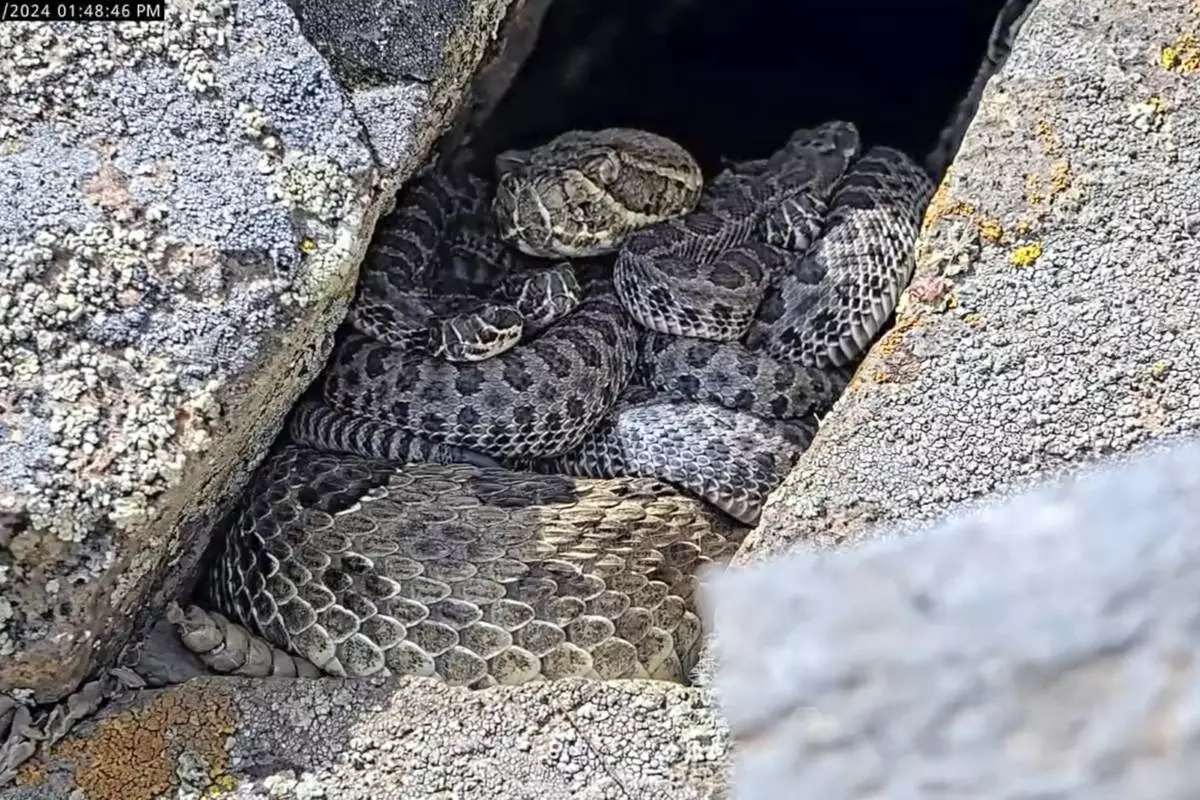
In this image taken from a Project Rattlecam video, an adult rattlesnake rests with juveniles at a den under remote observation in Colorado on Aug. 22, 2024. (Project Rattlecam via AP)
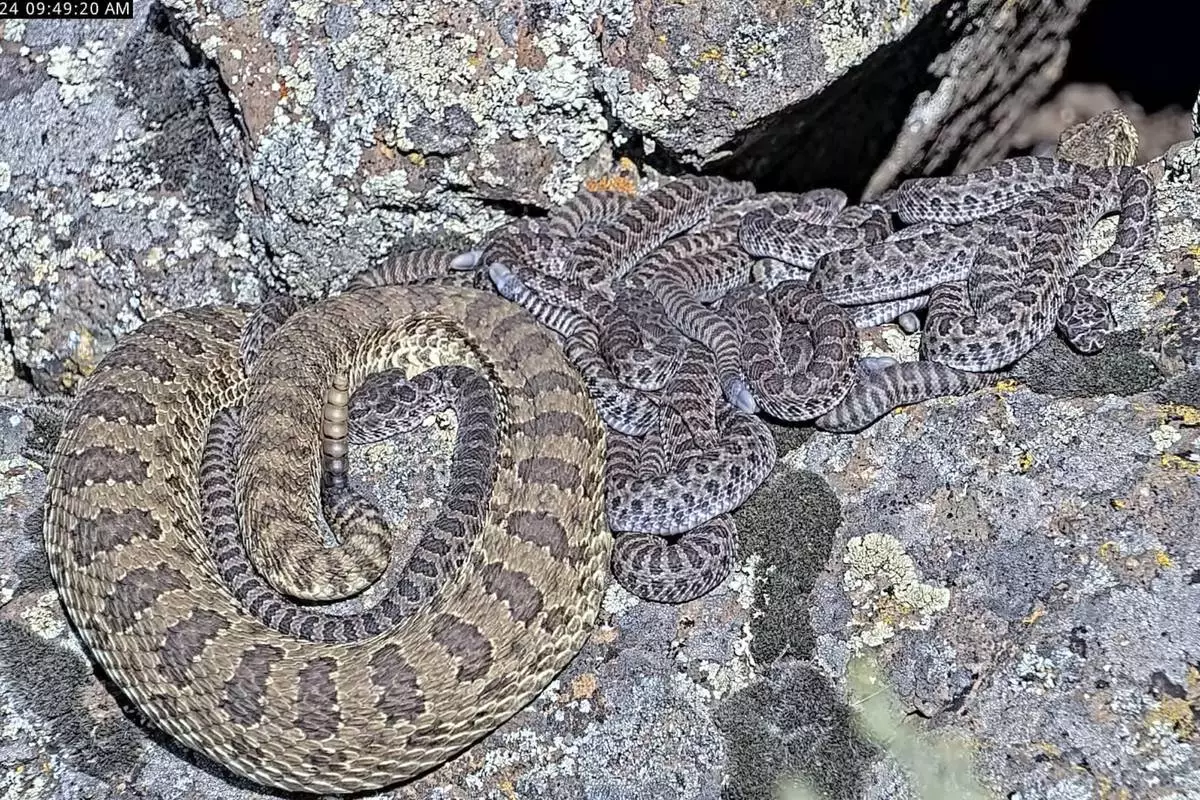
In this image taken from a Project Rattlecam video, an adult rattlesnake rests with juveniles at a den under remote observation in Colorado on Wednesday, Aug. 28, 2024. (Project Rattlecam via AP)
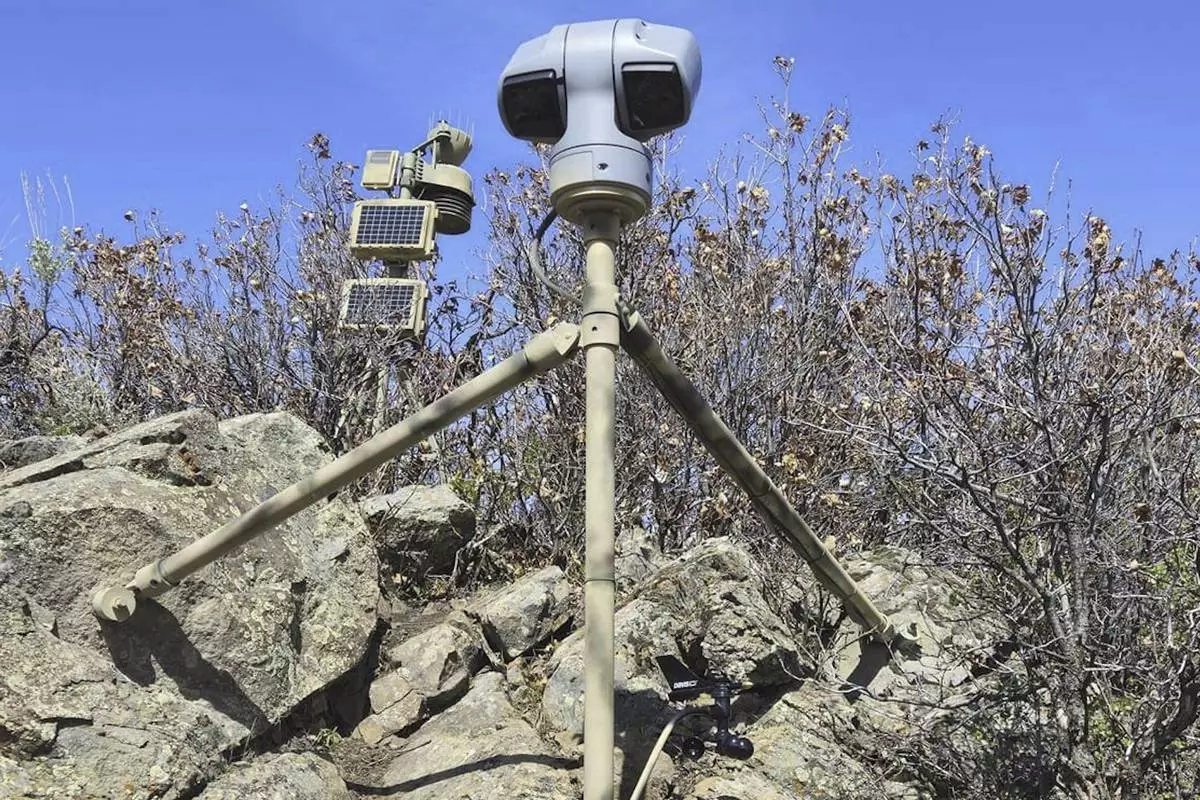
FILE - This image provided by Emily Taylor shows the weather station and camera setup, which are part of the Cal Poly research and community service initiative, Project RattleCam, in northern Colorado, in May 2024. (Emily Taylor/Project RattleCam via AP, File)

FILE - This undated image made from a video provided by Project RattleCam shows a "mega den" of rattlesnakes in a remote location in northern Colorado. (Project RattleCam via AP, File)
In one of the deadliest cult-related massacres ever, the remains of more than 430 victims have been recovered since police raided Good News International Church in a forest some 70 kilometers (40 miles) inland from the Kenyan coastal town of Malindi.
Seventeen months later, many in the area are still shaken by what happened despite repeated warnings about the church’s leader.
Autopsies on more than 100 bodies showed deaths from starvation, strangulation, suffocation, and injuries sustained from blunt objects. A gravedigger, Shukran Karisa Mangi, said he believed more mass graves were yet to be discovered. At least 600 people are reported missing, according to the Kenya Red Cross.
Here are some details about the case.
The evangelical leader of Good News, Paul Mackenzie, is accused of instructing his followers to starve to death for the opportunity to meet Jesus. Mackenzie pleaded not guilty to charges in the murders of 191 children, multiple counts of manslaughter and other crimes. If convicted, he would spend the rest of his life in prison.
Some in Malindi who spoke to The Associated Press said Mackenzie’s confidence while in custody showed the wide-ranging power some evangelists project even as their teachings undermine government authority, break the law, or harm followers desperate for healing and other miracles.
It’s not only Mackenzie, said Thomas Kakala, a self-described bishop with the Malindi-based Jesus Cares Ministry International, referring to questionable pastors he knew in the capital Nairobi. “You look at them. If you are sober and you want to hear the word of God, you wouldn’t go to their church. But the place is packed.”
A man like Mackenzie, who refused to join the fellowship of pastors in Malindi and rarely quoted Scripture, could thrive in a country like Kenya, said Kakala. Six detectives have been suspended for ignoring multiple warnings about Mackenzie’s illegal activities.
Kakala said he felt discouraged in his attempts to discredit Mackenzie years ago. The evangelist had played a tape of Kakala on his TV station and declared him an enemy. Kakala felt threatened.
Mackenzie, a former street vendor and cab driver with a high-school education, apprenticed with a Malindi preacher in the late 1990s. There, in the laid-back tourist town, he opened his own church in 2003.
A charismatic preacher, he was said to perform miracles and exorcisms, and could be generous with his money. His followers included teachers and police officers. They came to Malindi from across Kenya, giving Mackenzie national prominence that spread the pain of the deaths across the country.
The first complaints against Mackenzie concerned his opposition to formal schooling and vaccination. He was briefly detained in 2019 for opposing the government’s efforts to assign national identification numbers to Kenyans, saying the numbers were satanic.
He closed his Malindi church premises later that year and urged his congregation to follow him to Shakahola, where he leased 800 acres of forest inhabited by elephants and big cats.
Church members paid small sums to own plots in Shakahola. They were required to build houses and live in villages with biblical names like Nazareth, according to survivors. They said Mackenzie grew more demanding, with people from different villages forbidden from communicating or gathering.
During the COVID-19 pandemic, which witnesses said strengthened Mackenzie’s vision of the end times, the leader ordered more rigorous fasting that became even more stringent by the end of 2022. Parents were forbidden from feeding their children, witnesses said.
Like much of East Africa, Kenya is dominated by Christians. While many are Anglican or Catholic, evangelical Christianity has been spreading widely since the 1980s. Many pastors style their ministries in the manner of successful U.S. televangelists, investing in broadcasting and advertising.
Many of Africa’s evangelical churches are run like sole proprietorships, without the guidance of trustee boards or laity. Pastors are often unaccountable, deriving authority from their perceived ability to perform miracles or make prophecies. Some, like Mackenzie, can seem all-powerful.
Associated Press religion coverage receives support through the AP’s collaboration with The Conversation US, with funding from Lilly Endowment Inc. The AP is solely responsible for this content.
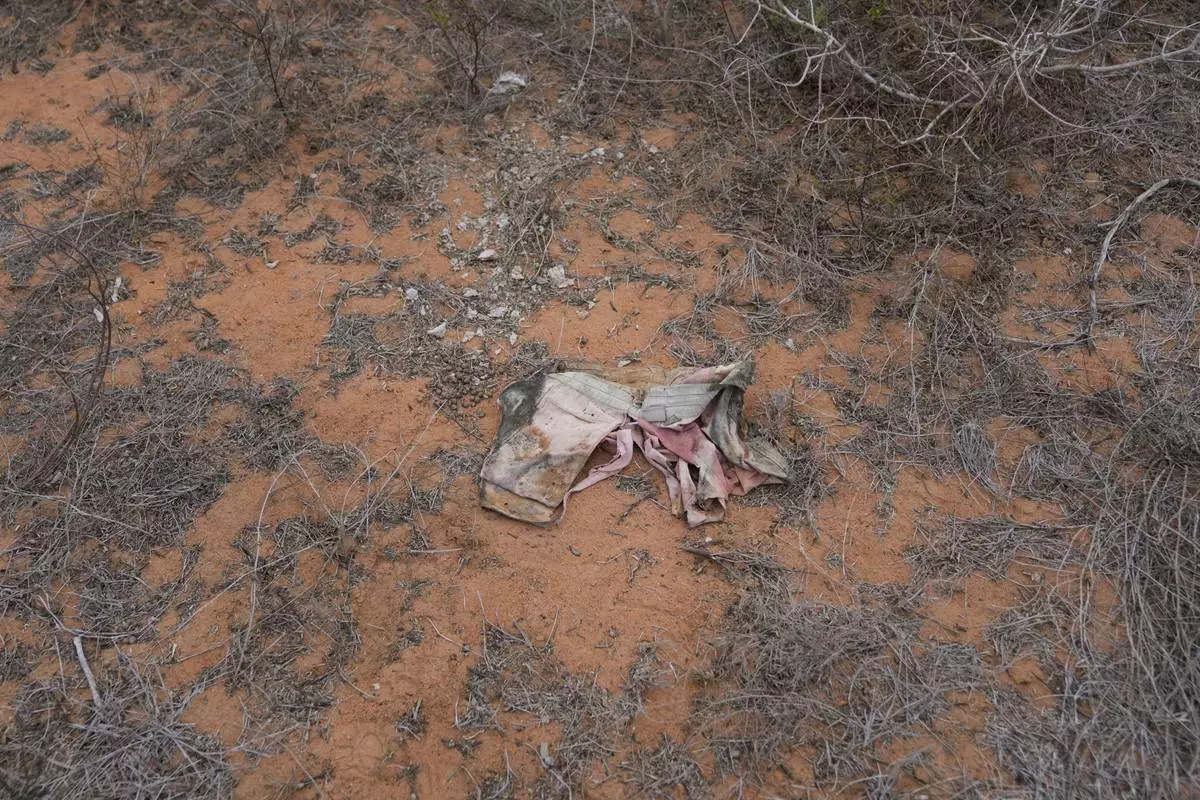
A piece of clothing lies in the bush near the forest where dozens of bodies were found in shallow graves in the village of Shakahola, near the coastal city of Malindi, in southern Kenya, on Thursday, Sept. 5, 2024. (AP Photo/Brian Inganga)








